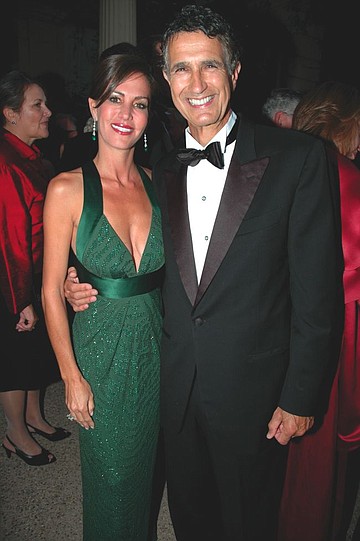 Facebook
Facebook
 X
X
 Instagram
Instagram
 TikTok
TikTok
 Youtube
Youtube

Daily newspapers still report titillating items regularly. Early in February, the shapely Lady Catarina Pietra Toumei was charged in Manhattan with claiming she was a representative of the storied Guggenheim family as she tried to peddle fake diamond, gold, and oil investments. She is a social butterfly residing in Rancho Santa Fe (where else?). Trouble is, prurient readers could get this news for free online many hours before the newspaper reported the story the next morning.
So, it was not surprising that only a few days after the lady (who may or may not be a countess) dominated front pages that the big Sacramento-based newspaper chain McClatchy reported a 10 percent plunge in its January advertising revenue, compared with a year earlier. McClatchy’s earnings were about cut in half during the period. The stock plunged 12.2 percent that day.
Admittedly, the adventures of the comely Lady Catarina Pietra Toumei are more captivating than the plunging profits of McClatchy Company. But the ad sales drop of the newspaper company does interest us old fogies who concentrate on (1) money and (2) the media. Bottom line: it’s clear that investors, and perhaps the daily newspaper industry itself, are convinced that advertisers will continue to migrate to digital media, and even though dailies are stepping up their own efforts to make money online, it’s a losing battle. Ink and paper will continue in sick bay.
Daily newspapers are slashing costs, but that won’t be enough. There are rumors that the San Diego Union-Tribune, Los Angeles Times, Orange County Register, and smaller papers owned by MediaNews Group could consolidate under common ownership. Hedge funds that have scooped up debt of overleveraged Southern California papers “are intent on driving consolidation,” says columnist James Rainey of the Los Angeles Times. The individual newspapers would retain their identities and news staffs but would combine efforts in advertising sales, distribution, printing, and human resources, says Rainey.
Such consolidation would no doubt lead to even more personnel head chopping. But would more pogroms work? Wall Street analysts don’t think so. They think the future of the daily newspaper is grim. “We are skeptical of the New York Times’ ability to keep reducing costs, and are concerned that the company will run out of fat to trim and have to cut into muscle, hurting the quality of its product,” says Joscelyn MacKay of Morningstar Research. “The growing number of free online information sources continues to weigh on New York Times’ core business,” which is newspapers, representing 84 percent of sales.
Newspapers are 78 percent of the revenue of Gannett, the largest publishing chain. Free online competition hurts. “Circulation volumes are falling, and advertisers are shying away from newspapers,” says MacKay.
Standard & Poor’s says McClatchy suffers from “migration of advertisers to the Internet.” Ditto for the Washington Post, which is also burdened by its ownership of Kaplan, Inc., a for-profit college operation that could lose some of its federal funding because of past and present misbehavior.
Morningstar quit doing research on E.W. Scripps stock. In 2008, E.W. Scripps created a new entity for its fast-growing cable networks and interactive media. Now the original media chain has only laggardly newspapers and TV stations; the websites associated with the company account for a small percentage of revenue.
Today, the question is whether the iPad and other “tablet revolution” products will rescue the daily newspapers. Investors doubt it.
The stock market seems to agree with analysts’ skeptical views. Newspaper stocks are far off their all-time highs, although they are now up from their very depressed 2008–2009 lows. Example: Gannett stock sold for $91.38 in 2004. In the depths of the bear market in early 2009, it plunged to $1.85. On Friday, it closed at $16.98. McClatchy sold for $76.05 in 2005 and sank below 50 cents in 2009, as Morningstar warned it was worth nothing. On Friday, it closed at $4.24.

This brings us to Charles Brandes, San Diego money manager. His firm, Brandes Investment Partners, bought into McClatchy at $44.50, becoming the media company’s largest institutional shareholder, with 14.63 percent of the stock. Then the Brandes firm committed one of Wall Street’s unforgivable sins: selling near the bottom — in McClatchy’s case, 70 cents. Similarly, the firm bought into Gannett between $36.50 and $55.50, becoming the largest shareholder with 11.25 percent of the stock. It dumped the stock in late 2009 for an average price of $7.21 — less than half the price it closed at on Friday, $16.98. (Copley Newspapers dumped the Union-Tribune near the bottom of the market too.)
Brandes also got into a lot of other stinkers, such as Countrywide Financial, the scandal-plagued mortgage pusher that Bank of America tried vainly to purify; Washington Mutual, a similar organization seized by the government in 2008; Royal Bank of Scotland, which fell under the watch and ward of the British government; and Freddie Mac (Federal Home Loan Mortgage Corporation), which went under U.S. conservatorship.
Charles Brandes’s investment strategy is to buy undervalued assets and wait until the stock price gets more realistic. A couple of decades ago, newspapers’ profit margins were around three times those of the average company. A former manager with the firm thinks that Charles Brandes kept expecting newspapers’ profits and stock prices to return to the good old days. He was not grasping “the reality of what was going on in print media — falling subscriptions, falling revenues. There was a paradigm shift” that more alert analysts perceived.
In 2005, Brandes Investment Partners had $101.9 billion under management. That’s down to $47.8 billion. But Charles Brandes built one of San Diego County’s most expensive homes. It’s 54,000 square feet on 30 Rancho Santa Fe acres and is worth at least $35 million. He lives there with his third wife, the lovely Tanya, and their enormous collection of cars and other chattels of the rich and chic. Meanwhile, he is having a knockdown, widely publicized divorce battle with his second wife.
Charles and Tanya are quintessential Beautiful People of the San Diego party set — pictured in the Union-Tribune in mid-2008 with David Copley at Cannes, for example.
On October 23, 2009, the Scripps Institution of Oceanography and David Copley put on a soiree to honor His Serene Highness Prince Albert II of Monaco. Charles and Tanya were there to socialize with the prince — and with Lady Catarina Pietra Toumei, another invitee.
I didn’t see it covered in the daily newspapers.